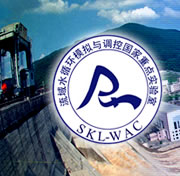《Journal of Hydro-environment Research》杂志刊登“基于遗传算法的地下水月值预测与模拟”
作者:E. Fallah-Mehdipour, O. Bozorg Haddad, M.A. Mariño
刊物:《Journal of Hydro-environment Research》 2013年4月3日 Available online
关键词:遗传算法;自适应神经模糊推理系统;预测;模拟;地下水位
摘要:地下水位是决定地下水模型模拟准确性的有效因素之一。因此,在地下水水文学中,应用简单方法来预测未来地下水位同时插补测站之间的数值是非常重要的。预测和模拟是运用历史及历史-现状数据来插补时间序列的两种方法。本文运用自适应神经模糊推理系统(ANFIS)与遗传算法(GP)这两种人工智能算法来预测和模拟在伊朗卡拉季平原的三个地下水位观测站点。运用地表水体的降水、蒸发数据以及渗透进入含水层系统的地下水位观测数据来插补测站之间的数据并用来验证地下水位月值。结果表明遗传算法比自适应神经模糊推理系统方法更能够降低均方根误差,对训练数据和验证数据分别降低8.35%与11.33%。同样的,用于模拟的不同观测井的均方根误差的平均值针对训练和测验数据分别提高了预测精确度的9.89%和8.4%。这些结果表明,基于遗传算法的预测及模拟方法在计算地下水位中是一个有效的方法。
Prediction and simulation of monthly groundwater levels by genetic programming
Authors: E. Fallah-Mehdipour, O. Bozorg Haddad, M.A. Mariño
Journal: Journal of Hydro-environment Research,2013,4,3
Keywords: Genetic programming; Adaptive neural fuzzy inference system; Prediction; Simulation; Groundwater level
Abstract: Groundwater level is an effective parameter in the determination of accuracy in groundwater modeling. Thus, application of simple tools to predict future groundwater levels and fill-in gaps in data sets are important issues in groundwater hydrology. Prediction and simulation are two approaches that use previous and previous-current data sets to complete time series. Artificial intelligence is a computing method that is capable to predict and simulate different system states without using complex relations. This paper investigates the capability of an adaptive neural fuzzy inference system (ANFIS) and genetic programming (GP) as two artificial intelligence tools to predict and simulate groundwater levels in three observation wells in the Karaj plain of Iran. Precipitation and evaporation from a surface water body and water levels in observation wells penetrating an aquifer system are used to fill-in gaps in data sets and estimate monthly groundwater level series. Results show that GP decreases the average value of root mean squared error (RMSE) as the error criterion for the observation wells in the training and testing data sets 8.35 and 11.33 percent, respectively, compared to the average of RMSE by ANFIS in prediction. Similarly, the average value of RMSE for different observation wells used in simulation improves the accuracy of prediction 9.89 and 8.40 percent in the training and testing data sets, respectively. These results indicate that the proposed prediction and simulation approach, based on GP, is an effective tool in determining groundwater levels.
原文链接:http://www.sciencedirect.com/science/article/pii/S1570644313000270#
翻译:杨泽凡;审核:刘淼

